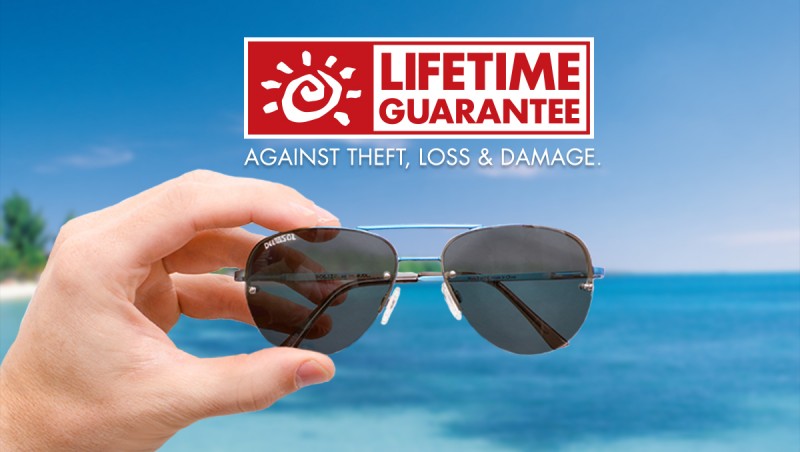From the Blues Brothers to Tom Cruise in Risky Business, sunglasses have become an iconic American emblem of style and attitude. Yet wearing sunglasses isn’t just about looking “cool”; beyond the fashion statement, there are compelling health reasons for you and your family to don a pair of shades.
So why do we see so many parents and kids outside, in the bright sunlight, not wearing sunglasses? Most likely, it has to do with a lack of information about ultraviolet (UV) rays, sunglasses and eye health.
To help solve this, let us explore 10 myths surrounding these topics, and how you can help your family — and yourself — stay informed and healthy – as taken from Dr. Jared Cooper’s article.
1. “Sunglasses are just for looks.”
Yes, sunglasses can add a certain “cool factor” to your ensemble, but the true value of sunglass use lies in its protective qualities. In particular, high-quality sunglasses will protect your and your kids’ eyes from the devastating effects of prolonged exposure to the sun’s UV rays. This is significant because this exposure can eventually cause serious eye conditions such as cataracts and macular degeneration.
2. “The only time to wear sunglasses is when it’s sunny outside.”
UV rays can be equally present and harmful on cloudy days as they would be on a sunny day. Indeed, it is entirely possible for the sun’s rays to do maximum damage when it’s raining or when the sun is setting. For this reason, adults and kids should wear sunglasses whenever they’re outdoors and the sun is out, even if it’s not hot outside or is cloudy.
3. “Sunglasses are just for grown-ups.”
Whether they’re playing outside at recess, hanging out at the bus stop or just enjoying a relaxing Sunday in the backyard, it’s a fact that children spend more time exposed to the sun than adults do. Wherever they may soak up the sun, kids need eye protection from UV rays — and they won’t have that protection unless you teach them not only to carry sunglasses with them, but to wear them each and every time their eyes are exposed to sunlight for extended periods of time.
4. “All shades offer 100 percent UV protection nowadays.”
Any bona fide pair of sunglasses will offer a certain measure of protection, but not necessarily 100 percent UV protection, so check the label to see if you’re getting full or only partial protection. Even worse, there are other types of shades that resemble bona fide sunglasses but aren’t the real deal. They have impressive-sounding names like “sun blockers” or “polarized glasses,” but the best policy for you and your kids is: No 100 percent UV protection, no purchase. Period.
5. “The labels on sunglasses are always accurate.”
Unfortunately this is not the case, as it has been reported that some sunglasses have been inaccurately labeled. This is not to say that labels can never be trusted, but when in doubt, stick to sunglasses produced by reputable manufacturers and sold from a well-regarded source.
6. “Having a darker tint means better protection from sunlight.”
There is no correlation between lens darkness and amount of UV protection, so don’t be tricked into thinking that the best sunglasses are the darkest ones. And dark sunglasses without sufficient UV protection can actually be quite harmful for you and your children, as the dark tint can cause one’s pupils to dilate, thereby exposing them further to the effects of sunlight. Consequently, your best bet is to focus more on full UV protection than lens color.
7. “My sunglasses say they’re polarized, so I’m definitely protected.”
Actually, polarization merely means that the lenses may reduce glare, and this has no relation to UV protection. Having polarized sunglasses is a nice feature, but it’s not essential to long-term ocular health. What is essential is that your shades provide full protection from the potentially harmful effects of the sun’s UV rays.
8. “High-end sunglasses aren’t worth it.”
A really good pair of sunglasses is a worthwhile investment in your family’s eye health. High-end sunglasses undergo rigorous testing and normally have lifetime warranties from the manufacturer, and have a frame sturdy enough to have an optometrist add high-end sunglass prescription lenses. Low-end sunglasses may have the UV protection but not the other benefits.
9. “The style and size of the lenses don’t matter, as long as they provide 100 percent UV protection.”
It’s great if your sunglasses offer 100 percent protection from UV rays, but the size and style of the lenses are also significant protective factors. Small lenses provide less eye protection than larger ones because they permit more sunlight to enter; if the lenses rest a far distance from the eyes, then there’s even less protection. Thus, you might consider choosing larger lenses that wrap fully around the eyes, protecting them from angles that smaller lenses wouldn’t.
10. “I lose or break my sunglasses all the time, so there’s no point wearing them.”
Interestingly, it has been reported that 14 percent of respondents in a study use that very excuse: They don’t wear sunglasses because they’re constantly losing or breaking them. Undoubtedly, kids are just as liable to break or lose sunglasses as adults, if not more so. Nonetheless, if we weigh the cost of buying new shades versus the cost of poor eye health, there’s really no excuse to not wear sunglasses.
Now that we’ve debunked the myths surrounding sunglasses, the only thing left to do is get some high-quality shades for you and your family. With the right knowledge and good habits in place, it’s not difficult to leverage the protective power of a good pair of sunglasses. There’s no doubt about it: Sunglasses make it “cool” to protect your family’s eyesight.

